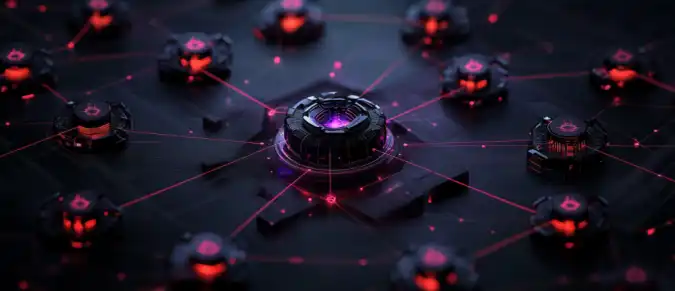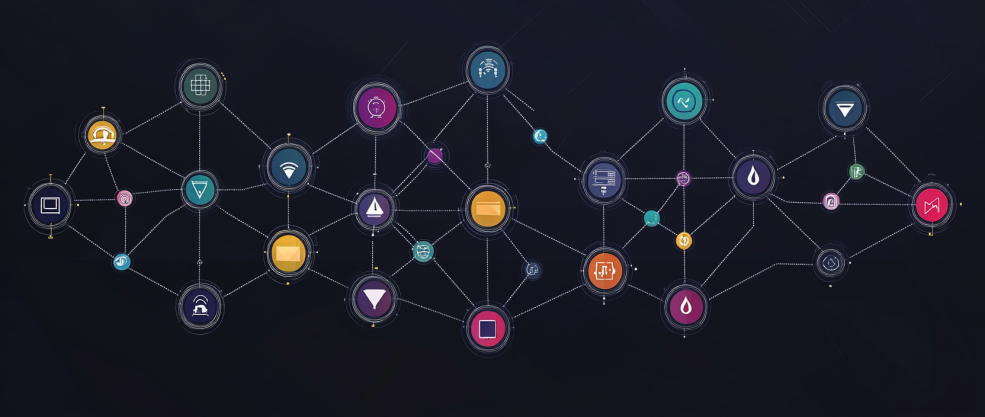Units.Network offers an innovative infrastructure that simplifies the creation and management of blockchains, making them accessible and interconnected. The platform is built on the Layer 0 concept, enabling it to serve as the foundation for multiple independent yet interconnected networks. Units.Network is designed for a wide range of users, including developers, businesses, and digital content creators. By supporting asset tokenization and NFT trading, the platform opens up opportunities for the effective implementation of blockchain technology across various industries, ensuring a high level of security and scalability.
Overview of Units.Network
The primary mission of Units.Network is to create a universal blockchain infrastructure where users can easily develop, deploy, and manage their own blockchains with the ability to securely interact with other networks. The platform allows the integration of blockchains of various structures and purposes, opening new possibilities for asset tokenization and the creation of decentralized applications.
Units.Network is built on its own blockchain based on the Layerzero architecture, ensuring high levels of security and performance. Layer 0 acts as a base layer, connecting chains built on different algorithms and protocols, enabling cross-chain compatibility and independent asset management.
The platform's unique feature is its support for NFT trading. Users can issue, trade, and manage non-fungible tokens within the ecosystem, opening access to a wide audience of digital art enthusiasts and collectors. NFT support makes Units.Network an attractive platform not only for corporate clients but also for digital content creators seeking to protect and distribute their work through blockchain technology. As a result, Units.Network combines the capabilities of decentralized finance, asset tokenization, and NFT management, creating a unified ecosystem for innovative developments.
Technical Architecture
The architecture of Units.Network is based on Layerzero, allowing the platform to act as a foundational layer for connecting various blockchains. This approach ensures full interoperability and trusted connections between chains, expanding the range of possible applications and integrations. The main components of the architecture include:
- Omnichain Interoperability — Fully trusted cross-chain interoperability based on Layer 0 consensus.
- Modular Blockchain — Modular blockchain structure providing flexible configuration and adding functional modules depending on tasks.
- Proof of Re-Stake — Reuse of Layer 0 economic incentives to achieve consensus across all connected chains, reducing network security maintenance costs.
- Asset Management Mechanism — The ability to manage both primary and additional assets, supporting different types of digital assets, including NFTs and tokens for decentralized finance.
Layer 0 is the core concept on which the entire platform is built, serving as a foundation for creating a decentralized network that includes several independent blockchains. Each blockchain created within Units.Network can operate independently, retaining its identity and functionality while remaining part of a unified ecosystem. This architecture provides flexibility and scalability, allowing each blockchain to be developed and adapted to meet specific requirements of the user or company.
Key Features
Units.Network offers a set of unique features that make the platform convenient and versatile for users looking to implement their ideas on the blockchain. The main characteristics of the project are presented in the table below:
| Feature | Description |
|---|---|
| Ease of Deployment | The platform allows users to launch their own blockchains without requiring deep technical knowledge. |
| Autonomous, Interconnected Chains | Each chain operates independently but can interact with others through Layer 0, ensuring scalability. |
| Decentralized Governance | Supports a governance system that allows community members to participate in the ecosystem’s development. |
| Scalability | The Layer 0 architecture allows the platform to scale, supporting multiple interconnected chains. |
| NFT Support | Enables the issuance and trading of NFTs within the ecosystem, attracting digital content creators and collectors. |
Units.Network greatly simplifies blockchain interaction and provides the conditions for the quick launch of new projects. Users can focus on their application's functionality, leaving network security and management to Units.Network. NFT support and tokenization expand developers’ options, enabling the integration of digital assets into various projects.
Applications and Potential
Units.Network has vast potential for application across various sectors. Thanks to its unique architecture and flexibility, the platform becomes a reliable tool for both individual users and large organizations. The versatility of Units.Network spans multiple industries, including finance, digital assets, corporate solutions, and decentralized finance. The built-in support for tokenization and the ability to create custom blockchains make the project a multifunctional foundation for numerous applications.
The main areas of application for Units.Network include:
- Asset Tokenization. The platform allows real and digital assets to be converted into tokens, which can be securely stored, managed, and traded on the blockchain. This is particularly useful for industries such as real estate, art, and intellectual property rights, where transparency and reliability are crucial.
- Decentralized Finance (DeFi). With support for EVM compatibility, Units.Network provides a foundation for creating DeFi applications. The platform ensures high security and performance, making it attractive for developing decentralized financial services such as lending, asset exchange, and liquidity management.
- Corporate Solutions. Companies can develop private blockchains on the Units.Network platform, tailoring them to their specific needs and integrating with other chains if necessary. This is particularly beneficial for organizations looking to apply blockchain to improve business processes, enhance transparency, and ensure a reliable record-keeping system.
- Digital Assets and NFT Support. The platform supports the creation and management of NFTs, attracting artists, game developers, and other digital content creators. NFT trading and integration capabilities expand Units.Network’s use cases, making it an effective tool for managing digital collections and content rights.
Each of these areas makes Units.Network a flexible and powerful solution for users looking to implement their ideas on the blockchain. The platform provides both the technical infrastructure and functional capabilities for interacting with other networks and managing assets, making it one of the most promising technologies for implementing blockchain solutions in business and everyday tasks.
Conclusion
Units.Network represents a significant step forward in blockchain technology, offering simplicity, flexibility, and scalability. Its unique architecture and functionality make it an attractive choice for developers, enterprises, and users seeking the benefits of decentralized technology. With the project’s development, new opportunities and applications can be expected, further contributing to the growth and adaptation of blockchain technology across various industries.






